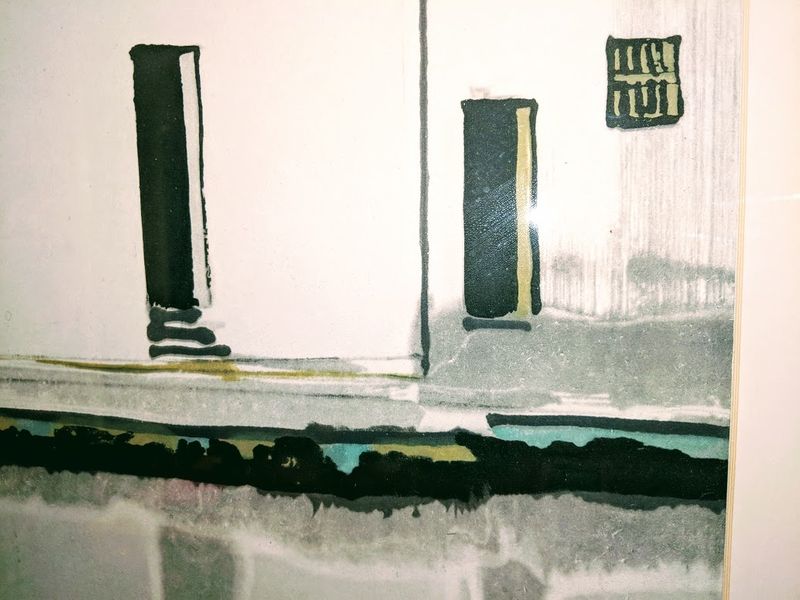Notes for Discovery

{Memory + Search + Flow + Serendipity}
I capture most of what I learn and encounter because I believe it contributes to further discovery. My hope is that my obsessive note taking the storage of my experiences (memories), paired with an effective ability to search allows me to connect ideas and solve future problems. My hope is that this note taking, and review of note taking, will fuel *more* ideas and mysterious rabbit holes.
It’s only recently that I’ve been able to put explanation to this software-enabled practice, mostly fueled by reading Herbert Simon’s The Sciences of the Artificial. For me, there are 4 elements to my notes practice: Memory, Search, Flow, and Serendipity.
Memory. First, we start with an even playing field. Anyone can teach themselves to store ideas and learnings for future use. Put another way: we should not feel incompetent or afraid to start! According to Herb Simon, the storage of memory plays a critical role in problem solving:
Specifically I should like to point to evidence that there are only a few “intrinsic” characteristics of the inner environment of thinking beings that limit the adaptation of thought to the shape of the problem environment. All else in thinking and problem-solving behavior is artificial is learned and is subject to improvement through the invention of improved designs and their storage in memory.
Over time, we create stable building blocks that serve as the foundation for our long term memory, a platform for our half ideas to play. We shift to search when this memory is not sufficient to directly answer our questions. Simon says: “Long-term memory operates like a second environment, parallel to the environment sensed through eyes and ears, through which the problem solver can search and to whose contents he can respond.”
Search. With my notes collected, I can now run a quick search and find shared terms across topics and timeframes. I can search by common tag, or by time encountered. I can quickly access the “shadow of lost knowledge” that contributes to a question at hand. I am thankful that I live in an era where I can do this; where with a little help of technology, a 5-word keyboard tap pulls up my messy handwriting from a diagram drawn years ago.
As Simon explains, “problem solving is often described as a search through a vast maze of possibilities, a maze that describes the environment. Successful problem solving involves searching the maze [of previous experiences] selectively and reducing it to manageable proportions.”
The process of selectivity, or curated trial and error, stems from “feedback of information from the environment.” Over time we get more selective and choose more successful options based on response / feedback, thus building expertise. However, I think that today we too often equate expertise— i.e. compounding selectivity—with specialization. Rather than using the term “specialization” (which I find to mean niched narrowness), we should celebrate curated trial and error, even more powerful when applied across disciplines. Dots should not be connected just on the same page, but to other pages frontwards and backwards. As Simon puts it: “information gleaned from one environment is used to guide the next step of search in the other.”
Flow. My own notes serve as a stock– the “present memory of the history of changing flows,” to quote Donella Meadows. (Environmental engineer by training, I appreciate any obscure reference to fluid dynamics that I can find!) I think of this flow as both input and amplified feedback. For example, the notes that I collect have more worth if I process them first. Simply saving an article might help for a future search, but it is not until I internalize the note into a stable building block that it becomes useful (note: stable does not equal permanent). The simple act of filtering my ideas for input to this blog is incredibly useful.
Flow helps recommit our learnings to memory. Reviewing a note some months or years later and adding an updated thought, or a rephrase, or a new tag, is useful too.
Addition 09/03/2018, after talking with a friend: Similar to the way our brains update our memories, I return to these notes and update them to reflect my current interests or experiences. (My change log process still needs to improve!) In doing this I take *agency* to make a comment or combine old ideas into a new note; studies show that this active remembering promotes a brain state prime for learning. And–while I don’t do this (yet?)–I could also review these notes in spaced repetition, either planned or unplanned.
…And this leads me to my final element…
Serendipity. In the Shape of Men and Automation, Simon writes that “small hints can have dramatic effects on the ease of a solution or a problem.” (Check out Simon’s theory of insight and the mutilated chessboard problem for more.) The reframing of an idea can have significant impact. It introduces variation to the landscape or perspective at hand, for a potentially better outcome. This variation (i.e. serendipity) is why I love living in a city— to me, density amplifies serendipity. It’s why I appreciate having lived in *many* cities, for increased exposure to experiences and perspectives… not to mention increased probability of bumping into friends around the world. All the more prepared with a toolkit of thoughts and half thoughts to build upon.
Serendipity is also important in the longevity of notes. Just like Google has its “I’m feeling lucky” function and Wikipedia has its Random function, our notes should have a similarly serendipitous path. Can my notes serendipitously prompt you one morning? Can your notes serendipitously prompt me? And ideally— can both your notes and mine prompt our future, more expert-laden selves?
As we may think. What might be next? I’m excited for a future where I can play with my ideas in more visual / physical form while doing outdoor activities, like running. For a future where we can better track the influence of ideas from one mind to the next, or from historic me to future me. (Perhaps a good use case for crypto?) How much of the bit of my current idea belonged to Einstein before me? And how much will it contribute to a future Einstein, after me?
Note: My favorite way of processing notes and ideas is through diagramming. I haven’t gotten my act in working order yet to do this efficiently, so for now what I share here is mostly typed text with photos of my favorite hand drawn diagrams, IRL.
